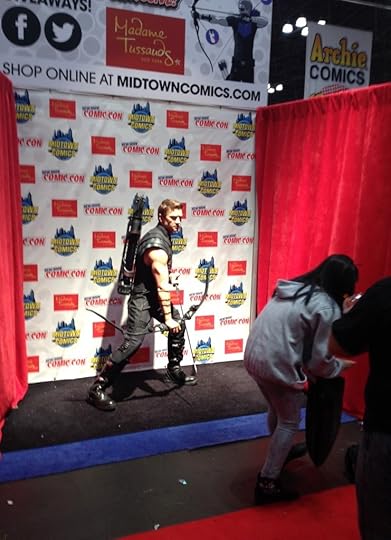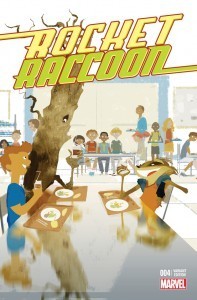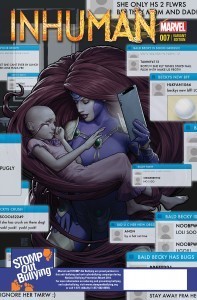Rick Schindler's Blog, page 3
April 30, 2015
Book review: “Notes on a Scandal”
 “When women stop reading, the novel will be dead,” Ian McEwen once wrote. Since women buy an estimated 80 percent of all novels, it’s peculiar how few female protagonists these days are occupied with anything besides overthrowing dystopian dictatorships or pursuing passion with handsome, sexually dominant (but intrinsically nice) billionaires and other similarly mythological beings.
“When women stop reading, the novel will be dead,” Ian McEwen once wrote. Since women buy an estimated 80 percent of all novels, it’s peculiar how few female protagonists these days are occupied with anything besides overthrowing dystopian dictatorships or pursuing passion with handsome, sexually dominant (but intrinsically nice) billionaires and other similarly mythological beings.
Zoe Heller’s second novel, “What Was She Thinking? Notes on a Scandal” (2004), a probing portrait of the toxic bond between two female teachers at an English high school, is a refreshing exception. Ostensibly the book’s topic is as titillating as “50 Shades of Grey”: an affair between brittle high school teacher Bathsheba Hart and a teen-age student. But the relationship the book is really about is the one between Sheba and Barbara, an older colleague who, in the guise of friendship, dominates and ultimately destroys her.
The characters could have been written specifically for Cate Blanchett and Judi Dench, both of whom were Oscar-nominated for the 2006 film adaptation. But even if you’ve seen the movie, the book stands up on its own. Heller’s eye for irony and a distinctively English brand of dreariness is unerring. As her yarn unfolds in the form of Barbara’s journal, it becomes clear that Sheba is not the predator she is painted to be in the tabloids once her secrets come to light, but actually the prey of Barbara, whose curdled humanity makes her at once monstrous and pitiable.
April 12, 2015
Womansplaining ‘Mad Men’
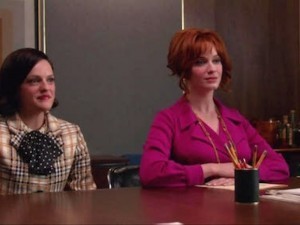
Peggy Olson (Elisabeth Moss) and Joan Harris (Christina Hendricks) in “Severance,” first of the final seven episodes of “Mad Men.”
Helen A. S. Popkin writes about technology, pop culture, gender politics and social media. Recently we talked about “Mad Men” and in particular “Severance,” first of the show’s final seven episodes.
RS: You called “Mad Men” a “great big dick whitman pity party on account of life in the ’60s being so difficult for tall handsome rich white men.” Yet you called the scene in “Severance” where Joan and Peggy are treated like crap by sexist men at a presentation “excellent” and “really brutal … not rape brutal but brutal in how it was for women pioneers.”
What affected you about that scene? Did it have to do with how Joan and Peggy turned on each other after being abused by men?
HP: The needs of Sterling Cooper Draper Price outweigh the misogyny dumped on Joan and Peggy. These are company women who, just like their male colleagues, will do whatever it takes to win the client. Their experience is akin to the crap Samantha ate in “Bewitched,” albeit with irony. I felt just as suffocated watching that scene as I did as a latchkey kid watching “Bewitched” reruns, which speaks to how well the “Mad Men” writers captured the era.
As a kid, I never understood why Samantha put up with the crap. She’s frickin’ MAGIC! As an adult, I understand how much we owe to tough-as-nails women who worked within the system to change it. In its way, “Bewitched” was truly subversive. Remember, Samantha smiled, ate shit, and then did whatever she wanted to achieve her end goal. That’s Joan and Peggy’s MO, as well.
At the risk of insulting dogs by comparing them to humans (or fictional characters), I call Joan and Peggy’s elevator scene following their presentation in “Severance” a case of transferred aggression. The shit they swallowed is toxic and it had to go somewhere. What’s more, these characters have a long, and very complicated relationship. They don’t hate each other but they don’t like each other, either. Joan resents Peggy’s early rise in the company, as well as her talent. Peggy is envious of the power and attention Joan has via her looks, and the skillful way she wields it. Peggy is seen for her intelligence, and Joan for her beauty. Each wants what she believes the other has. What’s more, they may be fellow travelers but they’re also fiercely competitive, as competitive as their male colleagues. Clashes are inevitable.

Helen A. S. Popkin
RS: The Bechdel Test, named for cartoonist Alison Bechdel, measures how sexist a work of fiction is by whether it has at least one conversation between two female characters about something other than a man. What grade on the Bechdel Test, or the Popkin Test, would you give Mad Men, a drama created by a white male (Matthew Weiner), and “Severance,” an episode written by that same white male?
HP: You’ve got women talking about things other than relationships, and if you remove Joan, Peggy, Betty or Sally from the storyline, their absences would be sorely missed. Bechdel Test: Passed. Yet it’s still a show about a Tall White Male A-hole with the luck of the angels. Really, the only restriction this man has in life is himself. All the foreshadowing, all symbolism is almost always about Don’s Hero’s Journey … or, as I call it, Dick’s Asshole Journey. Man, fuck that guy.
RS: Last Wednesday Sen Rand Paul had a testy interview with Savannah Guthrie on the TODAY show. Paul lectured Guthrie, an experienced journalist and legal analyst as well as a lawyer who graduated cum laude from Georgetown, on how to conduct an interview: “No, no, no, no, no, no, no, no, no, listen … You ask a question and you say, ‘Have your views changed?’ instead of editorializing…”
There was a lot of reaction on Twitter afterward, in which the term “mansplaining” kept coming up. What is mansplaining? Are there parallels between Guthrie’s interview with Paul and Joan and Peggy’s presentation in “Severance”?
HP: Though I missed that interview, it sounds to me that Mr. Paul was indeed engaging in the phenomenon author Rebecca Solnit called out in 2008, which is now called “mansplaining.” Men, rather than participating in a conversation, take over the topic (or change it) and assume the uninvited role of pedant. Any woman who chooses civility over confrontation (as is often the case) is shoved into the role of ingenue, regardless of her expertise or opinion.
But an ingenue, at least, is a human role. In the pantyhose client scene, Joan and Peggy are dehumanized. For the male clients, Joan and Peggy might as well be a goat sliding across ice. It’s cool to laugh at the goat, make fun of it, because hey, the goat doesn’t understand what you’re saying. Its feelings can’t get hurt; it’s a goat.
The pantyhose clients weren’t mansplaining. That would imply they were trying to impart information to the women, These dbags weren’t talking to Peggy and Joan, they were talking at them, as if they weren’t really there at all.
April 3, 2015
Book review: ‘Everything You Know’ by Zoe Heller
 Everything You Know by Zoë Heller
Everything You Know by Zoë Heller
My rating: 4 of 5 stars
Zoe Heller made an auspicious debut with the bleakly comic tale of a self-hating English writer whose greatest success is a memoir about the scandalous death of his wife, of whose murder he is widely suspected. Parallel to the chronicle of his unraveling career and life is the sad saga of his younger daughter, revealed in journals she left behind when she committed suicide.
Heller is unstinting at depicting pathos and squalor; she balances her two narratives adroitly and succeeds at the delicate art of making her antihero sympathetic without ever compromising on how unattractive and frequently reprehensible he is. She makes complex, nuanced points about morality and redemption, compellingly and entertainingly.
View all my reviews
March 27, 2015
Comic books and culture, warts and all
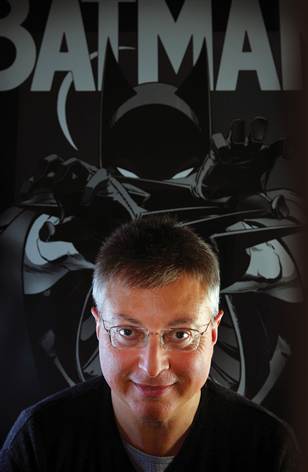
Michael Uslan, comics educator and founder of the modern Batman film franchise.
Since he created the first college-accredited course on comic books back in the early 1970s, Michael Uslan he has devoted much of his life to bringing recognition and respectability to the medium. And now that he and legendary Marvel Comics mastermind Stan Lee are leading a free online course about comics, he thinks his life’s goal may finally be within his grasp.
“I think with this we’re there,” Uslan told me during a recent phone interview for TODAY.com, referring to The Rise of Superheroes and Their Impact on American Pop Culture, a massive online open course (MOOC) offered by edX. He pointed out that there was an exhibit about comics at the Louvre, and that he consulted on another exhibit at the Metropolitan Museum of Art in New York City. “I have spoken twice at the UN on comic books,” he told me. “There is official comic book art hanging in museums.”
Like the comics medium, Uslan has come a long way. “When I taught my first course in 1971, I had to take it on the chin from a lot of columnists in the South,” he said. But since then he has gone on to be an executive producer on every Batman movie from Michael Keaton’s debut in the role in 1989 to next year’s highly anticipated “Batman v Superman: Dawn of Justice.”
Uslan said his edX course, which starts May 5 and is open for registration now, “will be a lot about understanding the American experience through pop culture. It’s the only way globally that anyone can understand it. We want to let the world know that comic books are as indigenous and American an art form as jazz, and also a legitimate contemporary art form.
“We also wanted to show how comic books exemplify American cultural history. One example is the evolution of the Asian villain and hero.”
For a vivid example of what Uslan’s talking about, you need look no farther than the earliest movie incarnation of the character he’s most closely associated with. In 1989’s “Batman,” the Joker (played by Jack Nicholson) is the bad guy. But in the character’s first incarnation on film, the 15-chapter Columbia movie serial released in 1943, (currently being shown Saturday mornings on TCM), the villain is Dr. Daka, a typically ugly Japanese stereotype of the World War II era played with relish by American actor J. Carrol Naish.
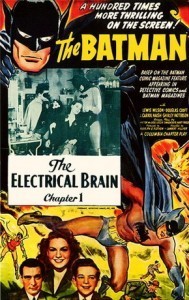 “In the ’30s Asians were mystic Fu Manchu types,” Uslan told me. “In the ’40s they were fanged World War II Japanese soldiers. In the ’50s they were barbaric hordes in Korea. In the ’60s they were about kung fu, transcendental meditation, Eastern philosophy — things young people were involved with at the time. Ultimately they emerged beyond early American stereotypes to diversity.”
“In the ’30s Asians were mystic Fu Manchu types,” Uslan told me. “In the ’40s they were fanged World War II Japanese soldiers. In the ’50s they were barbaric hordes in Korea. In the ’60s they were about kung fu, transcendental meditation, Eastern philosophy — things young people were involved with at the time. Ultimately they emerged beyond early American stereotypes to diversity.”
Uslan and I are on the same page about comic books holding a mirror to American culture. I tried to make the same point in a section of my novel “Fandemonium” that parodies comic-book price guides: 1940s issues of the fictional comic book “Skylord” include such installments as “Skylord KOs the Kamikaze Killers,” while in the Cold War era the character goes on to fight such villains as the Red Menace and the Kremlin Gremlin.
“You’ve got to look at them in the context of the times,” Uslan said of comic books. “The medium really does show our culture warts and all.”
In “Fandemonium,” comic book writer Ray Sirico rants that “superheroes are actually deracinated Greek gods.” Though he is far more temperate than my anti-hero, Uslan told me much the same thing: “Comics are now a mythology that is embraced around the world.”
“The Rise of Superheroes and Their Impact on American Pop Culture” is a 5-week online course open to everyone free of charge. See more information here.
October 12, 2014
New York Comic Con v. Fandemonium
When I wrote FANDEMONIUM, a novel set around a comics and fantasy convention in New York City, I inflated the scale of real-life cons I’d attended to add color and spice. But New York Comic Con has burgeoned since it started in 2006, to the point where details I’d considered extravagant when I put them in FANDEMONIUM have now become reality.
See for yourself. I took these photos this weekend at New York Comic Con; the words that accompany them are taken from FANDEMONIUM.
“Sirico let Fandemonium flow around him while he paused mid-aisle to consult the official program…. According to its map, New Frontier Comics ought to be somewhere nearby. Yes, this had to be it on his right: a mock Wild West saloon with a rotating radar dish on its roof and a bored-looking model in a flouncy pink dance-hall outfit waving lackadaisically….” (page 246)
“The two creatures looked as if they had just stepped out of Star Station Sigma on TV; their costumes and makeup were that good. The larger one Fred recognized as a Drakkonian; he wore shiny black leather….” (pages 187-188)
“It wasn’t until he crossed the aisle and got a closer look that he realized he’d been fooled: the figures were statues, like in a wax museum. They were unsettlingly realistic….” (pages 249-250)
And then there was this guy. I’d never seen him before, but I’d have recognized him anywhere:
September 12, 2014
Heroes and bullies
 One of the main characters in FANDEMONIUM, my novel about the comics business and comics fans, is a bullied 12-year-old named Fred. In the book I write that in his darkest moments, Fred likes to imagine that his favorite comic-book superheroes are his friends, “who would stand by him even though everybody else hated him: his mother, his teachers, the other kids.” I think many of us have felt like that at least once.
One of the main characters in FANDEMONIUM, my novel about the comics business and comics fans, is a bullied 12-year-old named Fred. In the book I write that in his darkest moments, Fred likes to imagine that his favorite comic-book superheroes are his friends, “who would stand by him even though everybody else hated him: his mother, his teachers, the other kids.” I think many of us have felt like that at least once.
Fred isn’t the only bullying victim in FANDEMONIUM. Another protagonist is physically abused by his gay lover, and a supporting character drunkenly recalls the time his older brother locked him in a closet for hours. One of life’s sad truths is that even after we’ve grown big and strong, bullies sometimes still confront us — only they’ve moved from the schoolroom to the boardroom, or even your own bedroom.
So when I had the chance earlier this week to report for TODAY on the special variant covers Marvel Comics is putting out next month to raise awareness of bullying, I leaped at it. Featuring such popular characters as the Hulk, Captain America and Marvel’s newest box-office idols, the Guardians of the Galaxy, the variant covers, which Marvel produced in coordination with the national organization STOMP Out Bullying, are vivid evidence that Fred isn’t the only kid who ever wished for superhuman allies against his oppressors.
The stark Captain America cover, in which Cap intervenes in a locker-room beating, is virtually a literal illustration of Fred’s wish-fulfillment fantasy in FANDEMONIUM. But the Rocket Raccoon cover, portraying two of the freakish Guardians of the Galaxy joining a boy at an isolated cafeteria table, is almost uncanny: It echoes a scene in the novel where Fred sits by himself at a convention snack bar (just as he sits alone in his school cafeteria), until he is joined by a young fan elaborately done up as an alien from a sci-fi TV show.
About the only difference is that Rocket is an anthropomorphic raccoon from outer space, whereas Fred’s new found friend is an anthropomorphic warthog from outer space. Freaky.
But FANDEMONIUM is set in 1993, before the advent of social media and one of its ugliest stepchildren, cyberbullying. “Bullying transcends all boundaries,” STOMP Out Bullying president Ross Ellis told me. “However, research suggests that boys are more likely to engage in physical aggression, while verbal aggression, often called relational aggression, is more common among girls.”
Portraying that less overt but perhaps even more harmful form of bullying fell to Marvel artist John Tyler Christopher, who drew a striking illustration (which TODAY debuted exclusively) of the superheroine Medusa using her prehensile hair to cradle and comfort a young girl who is surrounded by texts and posts mocking her because she is bald.
“I wanted to put an uncomfortable amount of text boxes around her, to show off how claustrophobic the constant onslaught can feel,” Christopher told me. “Having two young daughters, physical bullying doesn’t really cross my mind; but just overhearing other kids talk makes me cringe.”
“The covers show the power of standing up for others, for being a friend, for having empathy, for being kind to others, for being tolerant, and for having understanding,” STOMP’s Ellis told me. Which may be another way of phrasing the motto of Fred’s own favorite heroes, the fictional Pantheon of Power in FANDEMONIUM: Where one might fail, many shall prevail.
August 7, 2014
Review: ‘The Phoenix Year’ by David L. Blond
Th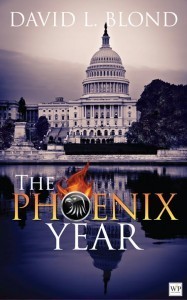 omas Carlyle famously called economics “the dismal science.” But mixed with colorful characters, brisk action, exotic locations and generous dollops of sex, it propels an entertaining and smarter-than-average thriller from Dr. David L. Blond, The Phoenix Year.
omas Carlyle famously called economics “the dismal science.” But mixed with colorful characters, brisk action, exotic locations and generous dollops of sex, it propels an entertaining and smarter-than-average thriller from Dr. David L. Blond, The Phoenix Year.
Blond is an economic consultant whose previous employers include the United Nations, the office of the Secretary of Defense and a number of global firms. Thus it’s hard not to see him as the inspiration for his own hero: Michael Ross, an economic advisor to the president who discovers a 50-year-old conspiracy to shatter the global economy. It’s equally difficult not to imagine the long-festering frustration with institutional folly that might have prompted him to imagine a cabal of billionaires contriving to trigger a cascade of financial calamities like an elaborate domino stunt.
Wisely, Blond spices these macroeconomic machinations with a beautiful and deadly Russian spy; a resourceful CIA agent who survived the brothels of Bangkok; a female banker who abandons her principles for the dank delights of sexual submission; an overleveraged real estate tycoon whose debauched wife and daughter have been abducted into slavery, plus literal cliffhangers (the sections involving perilous climbing in the Swiss Alps are particularly compelling).
But its economic underpinnings are what distinguish The Phoenix Year from garden-variety thrillers. Blond’s intimacy with the vagaries of currency and commodities and the foibles of businessmen and bureaucrats is self-evident, lending the novel internal consistency that makes its outlandish plot plausible.
For there’s no Auric Goldfinger or Ernst Stavro Blofeld at the center of the conspiracy; the real villains of this piece are Adam Smith and Milton Friedman. Even 007 might have a tough time with those guys.
Learn where to buy “The Phoenix Year.”
Follow David L. Blond on Twitter.
July 19, 2014
Review: ‘Entropy’ by Robert Raker
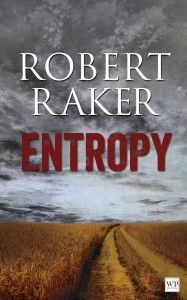 In thermodynamics, entropy is unusable energy; in literature and popular culture, it has become a metaphor for inexorable decay and disorder. It is the title of one of Thomas Pynchon’s earliest stories and a motif in some of his most emblematic works, including The Crying of Lot 49 and Gravity’s Rainbow. And it is also the title and motif of an elegiac crime novel by Robert Raker.
In thermodynamics, entropy is unusable energy; in literature and popular culture, it has become a metaphor for inexorable decay and disorder. It is the title of one of Thomas Pynchon’s earliest stories and a motif in some of his most emblematic works, including The Crying of Lot 49 and Gravity’s Rainbow. And it is also the title and motif of an elegiac crime novel by Robert Raker.
Entropy revolves around a series of grisly child murders in a woebegone region of Pennsylvania. Raker excels at painting its dismal landscape: a once-thriving farm reduced to mire by a blinding rainstorm; a neglected swimming pool in which a small body floats; a sweltering bus.
He is similarly adept at delineating the desolate hearts of the four narrators who tell his tale in turn, in fractured chronology redolent of Joseph Conrad: the diver contracted by police to retrieve the victims’ bodies, a man more comfortable immersed in water than in the mainstream of life; a musician marred by more than the loss of an arm; an undercover agent corrupted by the criminal identities he must assume, and an artist’s model numbed by tragedy and betrayal.
À la film noir, there are no heroes in Entropy to solve the case and save the day; just tormented souls grasping in vain for happiness and human connection. And they are connected, but only like flies caught in the same web. The bleakly beautiful pattern of that web becomes fully apparent only at this compelling novel’s cathartic climax.
Follow Robert Raker on Twitter.
Visit Robert Raker’s Facebook page.
Review: Entropy by Robert Raker
 In thermodyamics, entropy is unusable energy; in literature and popular culture, it has become a metaphor for inexorable decay and disorder. It is the title of one of Thomas Pynchon’s earliest stories and a motif in some of his most emblematic works, including The Crying of Lot 49 and Gravity’s Rainbow. And it is also the title and motif of an elegiac crime novel by Robert Raker.
In thermodyamics, entropy is unusable energy; in literature and popular culture, it has become a metaphor for inexorable decay and disorder. It is the title of one of Thomas Pynchon’s earliest stories and a motif in some of his most emblematic works, including The Crying of Lot 49 and Gravity’s Rainbow. And it is also the title and motif of an elegiac crime novel by Robert Raker.
Entropy revolves around a series of grisly child murders in a woebegone region of Pennsylvania. Raker excels at painting its dismal landscape: a once-thriving farm reduced to mire by a blinding rainstorm; a neglected swimming pool in which a small body floats; a sweltering bus.
He is similarly adept at delineating the desolate hearts of the four narrators who tell his tale in turn, in fractured chronology redolent of Joseph Conrad: the diver contracted by police to retrieve the victims’ bodies, a man more comfortable immersed in water than in the mainstream of life; a musician marred by more than the loss of an arm; an undercover agent corrupted by the criminal identities he must assume, and an artist’s model numbed by tragedy and betrayal.
À la film noir, there are no heroes in Entropy to solve the case and save the day; just tormented souls grasping in vain for happiness and human connection. And they are connected, but only like flies caught in the same web. The complex pattern of that web becomes fully apparent only at this compelling novel’s cathartic climax.
July 1, 2014
7 TV spin-offs that spun out instead
TV now has enough spin-offs to make an Olympic figure skater dizzy. This fall, Fox is giving us a Batman prequel called “Gotham,” while CW’s “Arrow” will bond with a new superhero buddy, “The Flash.” CW is also working on a “Supernatural” spin-off, while CBS is extending two long-in-the-tooth franchises with “NCIS: New Orleans” and “CSI: Cyber.”
Yet CBS passed on “How I Met Your Dad,” a proposed spin-off of the long-running “How I Met Your Mother.” And emails leaked by a bored NSA intern reveal other spin-offs that didn’t quite make it onto the fall sked, including:
Law & Order: Fashion Victims Unit E! Entertainment Television’s first police procedural would have followed Joan Rivers, Kelly Osbourne and Giuliana Rancic as they patrolled Rodeo Drive with Tasers, ready to mete out swift justice to anyone caught wearing white after Labor Day.
The Orphan Blacklist A breakdown in negotiations between BBC America and NBC scuttled this prospective series about a feisty FBI profiler with daddy issues who discovers that her own clones are vying with her for the affections of a charming sociopath played by James Spader.
America’s Got Zombies In this proposed spin-off from “The Walking Dead,” Howie Mandel, Heidi Klum and Howard Stern were to have crisscrossed post-apocalyptic America in an armored Humvee, auditioning singing zombies to compete for unlimited supplies of brains.
Real Estate Agents of S.H.I.E.L.D. ABC and HGTV failed to come to terms on this reality spin-off in which elite teams from S.H.I.E.L.D. and rival spy agency HYDRA would revisit communities destroyed by their high-tech weaponry, then race to relocate the emotionally shattered survivors in stylish and affordable new homes.
Bates Motel Kitchen Nightmares Norman Bates and his mom were unable to come up with enough money to hire Gordon Ramsay to upgrade their snack bar. Each week another prospective head chef would have been eliminated — permanently.
 Throne of Ducks A&E’s first fantasy epic would have opened with a grisly death — the inventor of a popular duck call attacked by flocks of frenzied mallards after mistakenly sounding a mating call — followed by dynastic intrigue as his sons schemed to take over the family business.
Throne of Ducks A&E’s first fantasy epic would have opened with a grisly death — the inventor of a popular duck call attacked by flocks of frenzied mallards after mistakenly sounding a mating call — followed by dynastic intrigue as his sons schemed to take over the family business.
Here Comes the Revenge of Two and a Half Broke Girls Two waitresses’ elaborate plan to avenge themselves against snooty Hamptons residents who leave them lousy tips would have been turned upside down by the unexpected arrival of a runaway child beauty pageant contestant.
Rick Schindler's Blog



